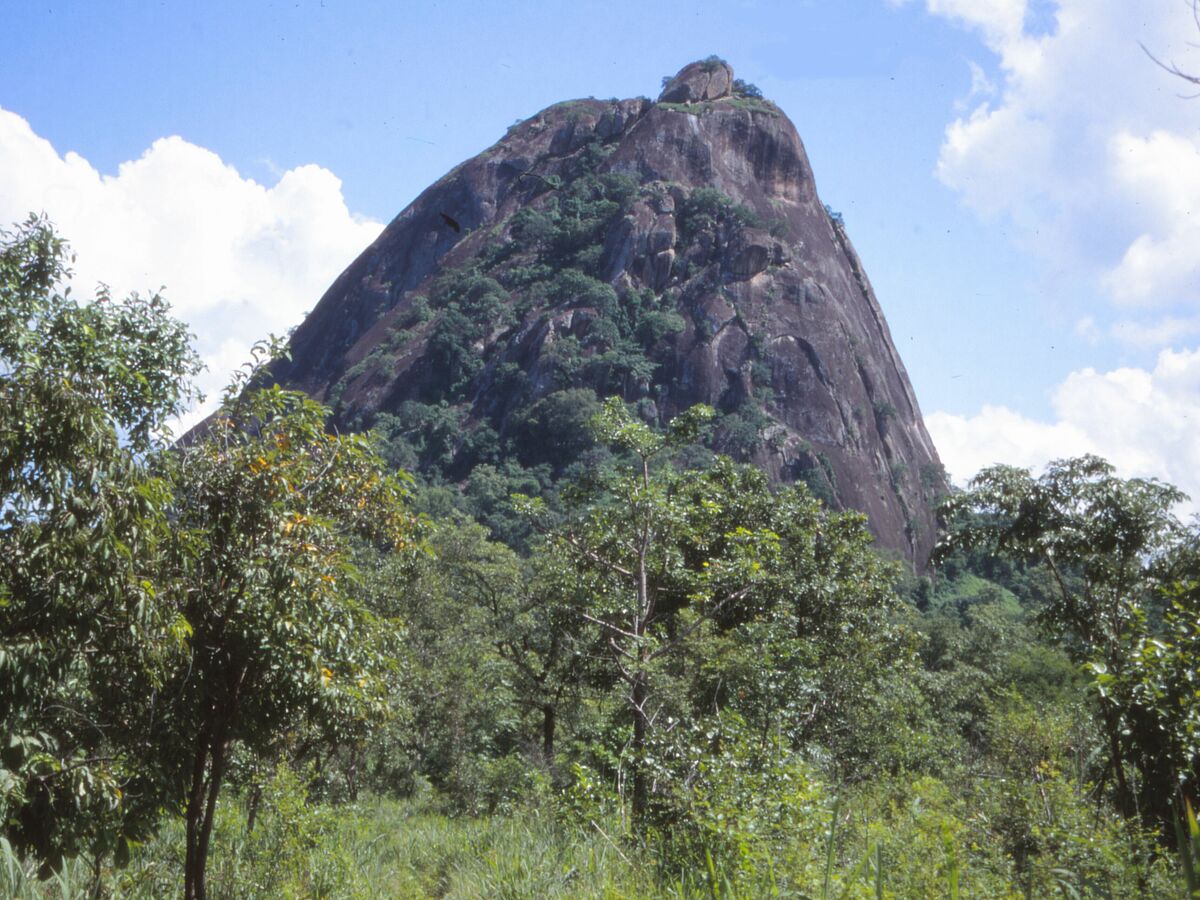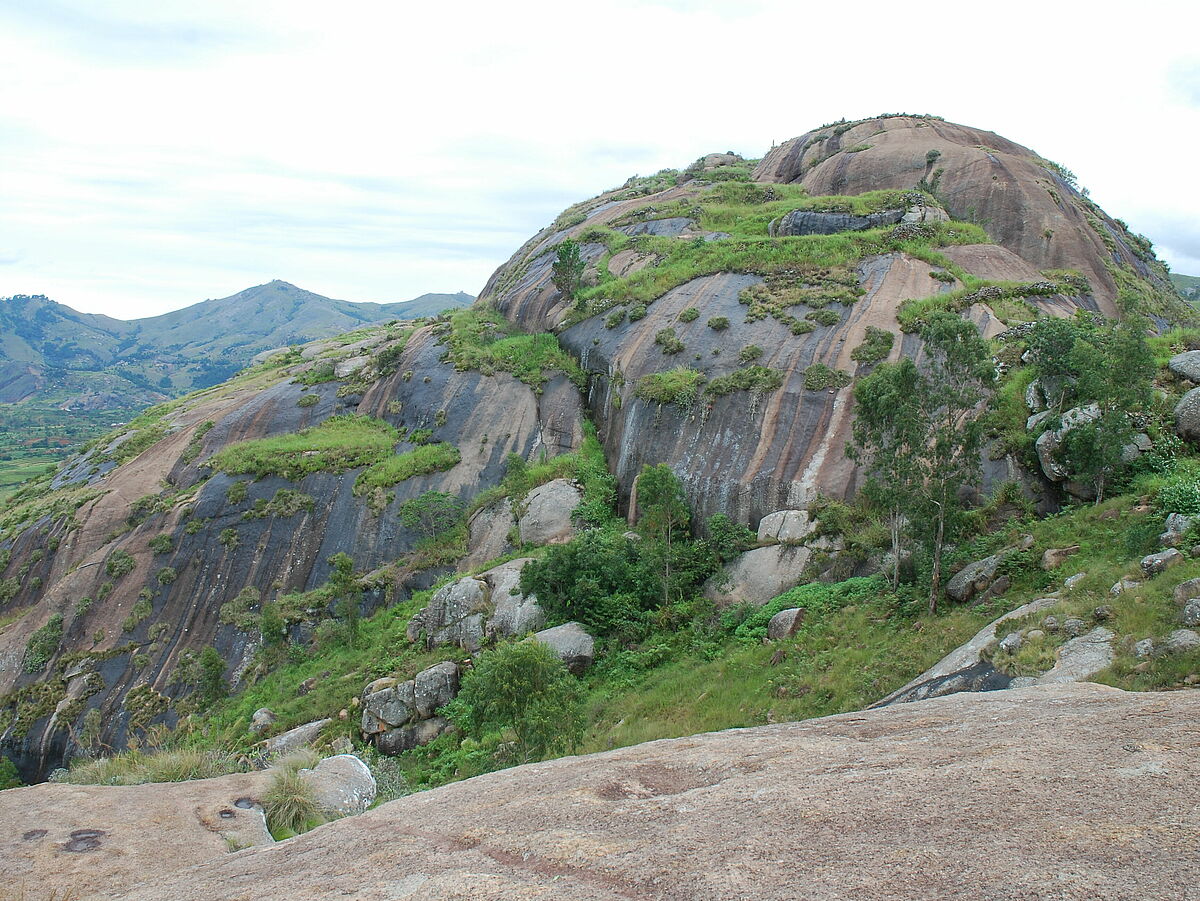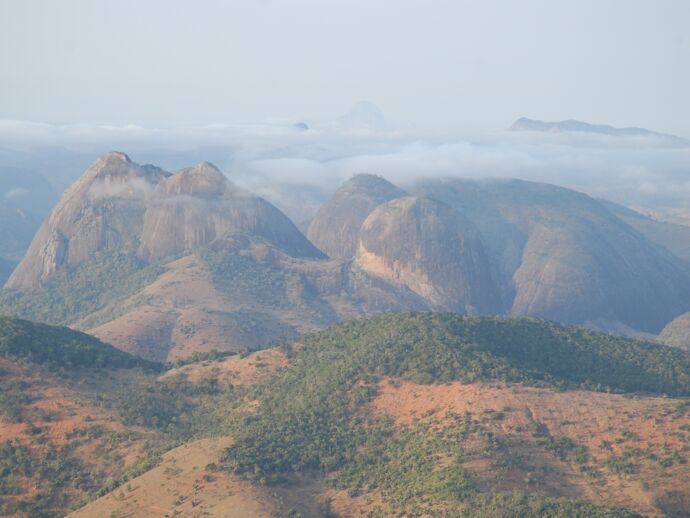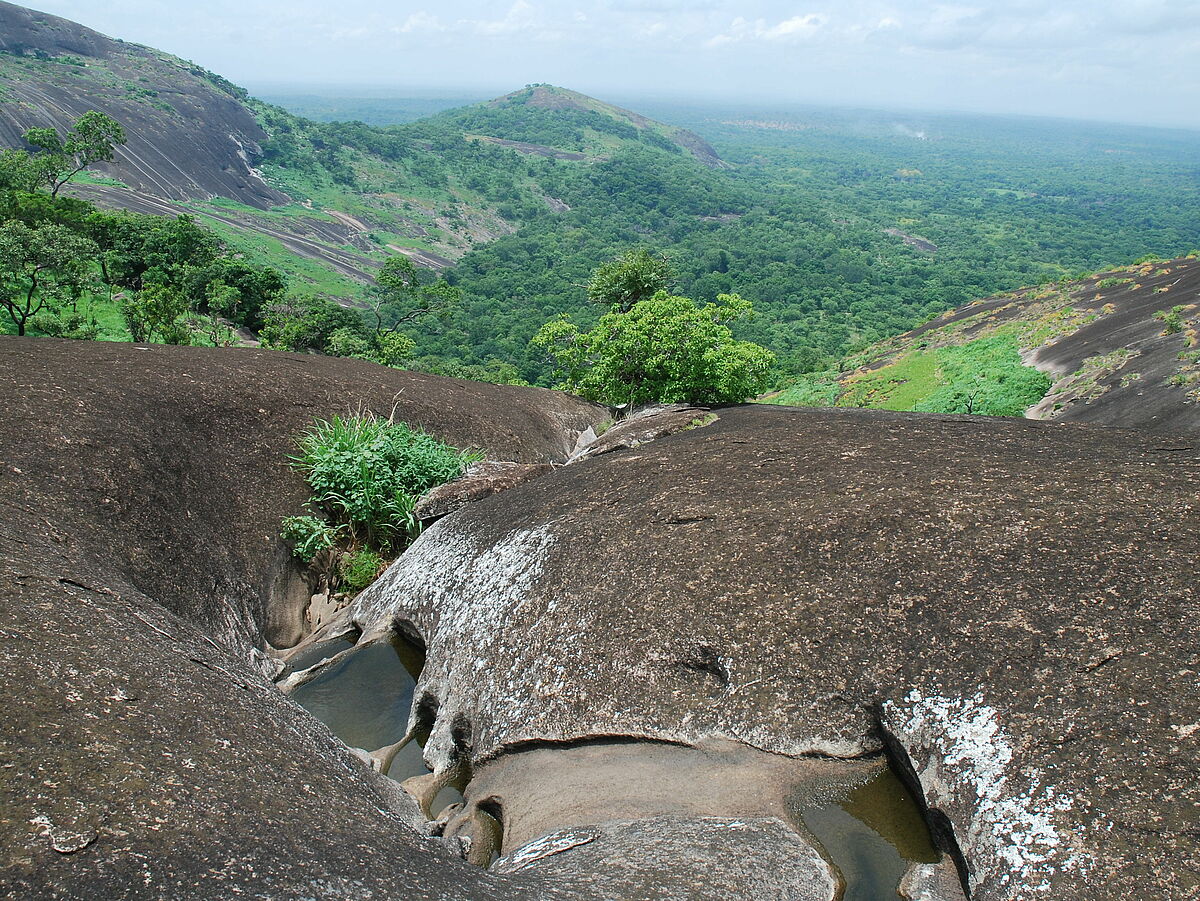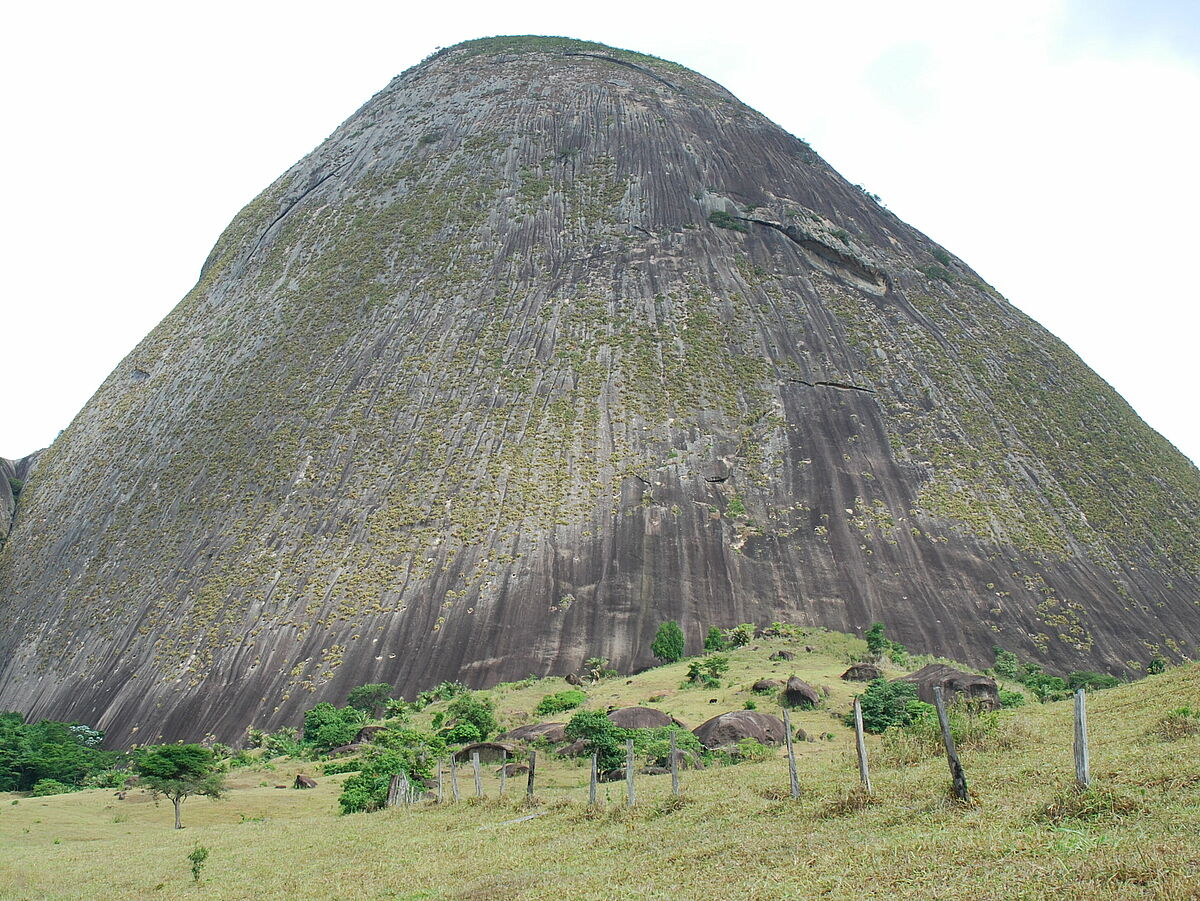Inselberg
The term “inselberg” (from German Insel = island and Berg = mountain) has been invented by the German geologist Wilhelm Bornhardt in 1900. Inselbergs are old landscape elements (with an age of millions of years) that occur on crystalline shields of all continents. They are mainly granitic or gneissic rock outcrops that rise more or less abrupt above their surroundings. Frequently they are dome-shaped and possess steep slopes consisting of bare rock.
Inselbergs are rocky outcrops of Precambrian granite or gneiss, most of which occur in the tropics and subtropics. As azonal sites with extreme microclimatic and edaphic conditions, they produce specialists with exceptional adaptation strategies, e.g. drought-tolerant plants, and also favour endemism.
Such terrestrial habitat islands in Brazil, West Africa and Madagascar represent an essential part of our research focus. Their role as model systems allow for studies on evolutionary processes and the diversity of species occurring there. The species inventory and ecology are investigated, as well as the molecular genetic diversity and the relationships of these species to each other, along with the influence of the inselbergs on speciation processes.
Our aim is to gain a better understanding of the evolution of plants that have been able to adapt to such extreme environmental conditions. These findings should not only serve to protect these unique habitats and plants, but also, in the course of the increasing global expansion of arid regions, aid to research possible applications for agriculture.
